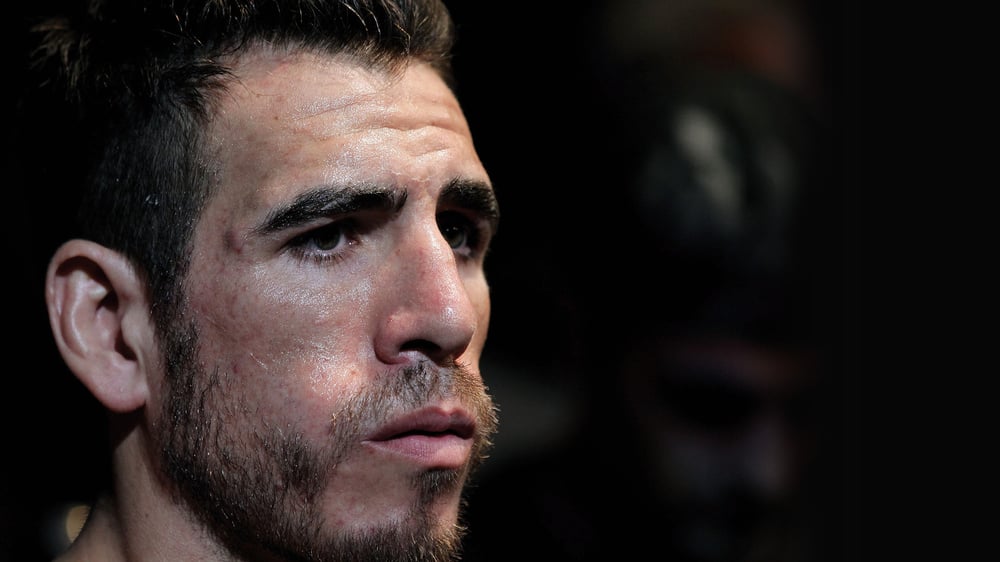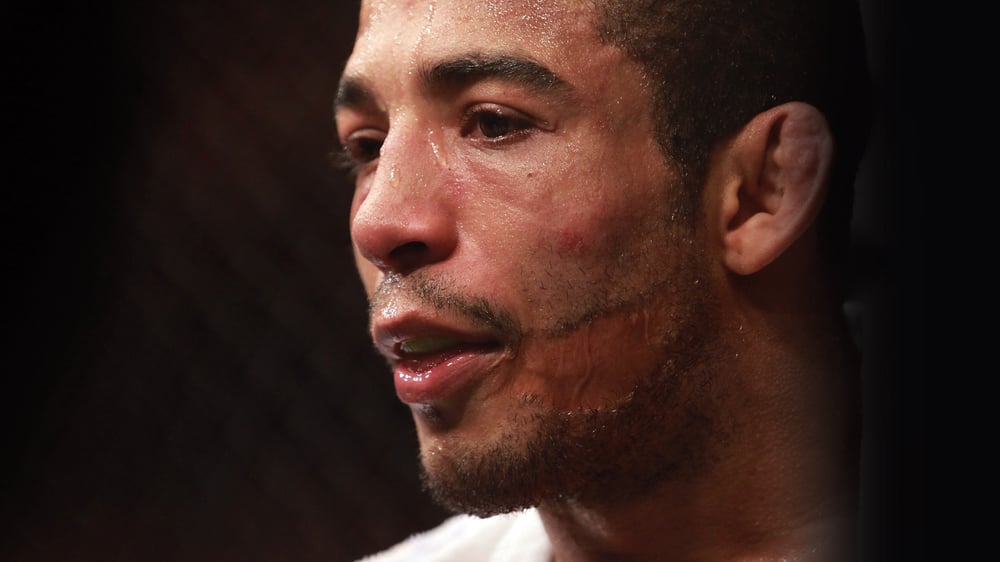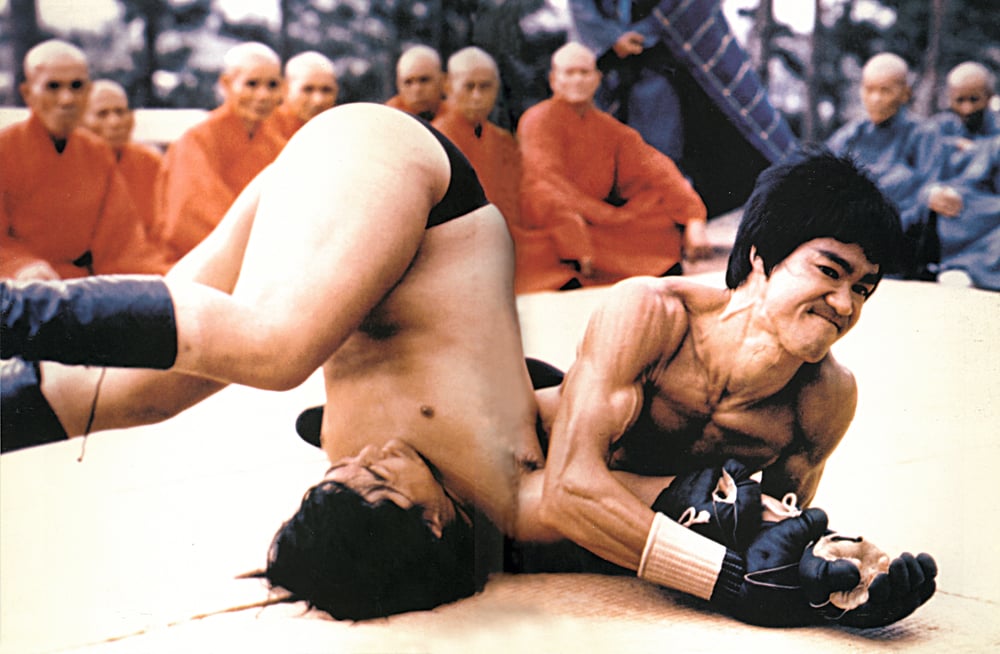
Issue 083
December 2011
The days of styled fighters in the Octagon are coming to an end, the era of the true mixed martial artist has now begun…
In truth, calling a sport previously known as ‘no holds barred’ by the name ‘mixed martial arts’ was a pretty bold sentiment in the early days of the fledgling spectacle’s development.
Sure, a handful of competitors, including original UFC champ Royce Gracie, wrestling and boxing stylist Don Frye, UFC Hall of Famer Ken Shamrock and international imports Marco Ruas and Oleg Taktarov were among those competitors who boasted at least some cross-training in the various arts that are now generally considered to serve as the foundation for modern MMA training. But most men who stepped into the Octagon during the sport’s early days were more gutsy toughman than seasoned prizefighter.
Yet things began to quickly progress as more and more skilled competitors looked to deal with the tricky techniques of Gracie jiu-jitsu. The ground-and-pound of Mark Coleman showcased wrestling’s ability to power through the grappling prowess of skilled submission fighters. Then it was the defensive wrestling and pinpoint strikes of Maurice Smith, which then gave way to the vaunted overall game and athletic talent of one Frank Shamrock.
Within a few short years, it became overwhelmingly evident that to be successful in MMA, one needed a balance of striking arts such as boxing and Muay Thai, submission weapons lifted from Brazilian jiu-jitsu (or catch wrestling if you prefer your grappling to take place from top position), and, of course, enough wrestling to determine whether or not your fight was going to take place on the feet or if you were planning on taking an opponent to the floor to finish the encounter.
But when exactly did Jon Jones’ spinning back-elbows, leaping knees and crawling attacks become part of the curriculum? Will all future bantamweight champions need to copy the frantic movements of Dominick Cruz, complete with division-topping speed and an apparently unpredictable series of attacks both inside and out? In short… probably.
While 17-time UFC veteran Kenny Florian has received criticism from UFC president Dana White for falling short in three separate title-challenge contests, the Massachusetts native is uniquely qualified to comment on the modern development of MMA. As a cast member on the original season of The Ultimate Fighter, Florian has been at the epicenter of the UFC’s current growth boom. And, as the first fighter in UFC history to compete in four different weightclasses, Florian has seen a wide variety of talent on the opposite side of the promotion’s cage.

He has also served as a bit of a generational bridge, boasting a career that has thus far coincided with the final UFC appearances of Hall of Famers Royce Gracie, Chuck Liddell and Randy Couture on up to the Octagon debuts of current new-generation champions Cain Velasquez, Jon Jones, Frankie Edgar, Dominick Cruz and José Aldo
Florian’s UFC debut even preceded that of Anderson Silva, who has seemingly dominated the middleweight division since time immemorial.
As a fighter who also dabbles in color commentary for the UFC and in-depth analysis of the sport for ESPN, Florian also remains a fan of the game. And when it comes to the rapid development of fighting styles in the UFC, he believes it can produce nothing but good for the ongoing development of the sport.
“It’s great to see,” Florian says. “It’s beautiful to watch these guys come up like Jon Jones and their creativity and the way they move. I’m a fan of the sport, and I’m a martial artist, so seeing guys like that, it’s super impressive. This is the new crop of guys coming up. Anthony Pettis, he’s a fun guy to watch. José Aldo. All these guys are fearless out there, and I like seeing that.”
Florian believes the development of unique and creative styles is due to the relative newness of MMA as a sport and the differing camps responsible for bringing along the sport’s best fighters.
“This is the new crop, and I think their unique style has to do with a few things,” Florian says. “The sport, no one has figured out mixed martial arts. When you go to a boxing gym, there’s only so many punches that you need to throw out there. The training is streamlined for the most part. Mixed martial arts, you go to Greg Jackson’s camp, they have a different philosophy and a way of training. AKA may have a different philosophy. At Tristar, we have a different philosophy. My brother and I – whatever. Everybody has a different way of approaching mixed martial arts, so it’s an exciting time.
“No one has really figured out, ‘This is the way to go in. We’re going to go in, we’re going to do wrestling. We’re going to jiu-jitsu this way. We’re going to do boxing this way. We’re going to tailor our Muay Thai for this type of style.’ We’re kind of figuring that
out now.”

Aldo’s smashing leg kicks, which weren’t necessarily on display during the UFC featherweight champ’s recent win over Florian, are more akin to some type of slapping soccer kick than similar strikes seen from other skilled strikers. And Pettis, well one needs say little more than “Showtime kick” to conjure up thoughts of striking attacks that would make you laugh if a Hollywood director were bold enough to pretend that’s how fights go inside the cage.
Florian believes it’s just the tip of the iceberg – styles that even legends of the sport like Wanderlei Silva, Chuck Liddell, Bas Rutten and other noted strikers would never have attempted in their prime.
“It’s an exciting time to be a part of the sport,” Florian says. “The guys that are starting out younger are going to figure it out a lot sooner than we did. Hopefully we’re figuring it out for them. The sport’s just going to get bigger and better, and we’re going to see more of these crazy athletes.”
And it’s these crazy athletes – the new generation of physical specimens and genetic freaks – that will unquestionably rule the future of the sport. UFC boss White has long contended that as the financial state of fight purses increases, so too will the quality of athletes looking to take center stage. Fight fans caught a glimpse of that with The Ultimate Fighter Season 10, when Marcus Jones, Matt Mitrione, Brendan Schaub and Wes Shiver – all former NFL’ers – were given a crack at besting an all-heavyweight season that included streetfighting sensation Kevin 'Kimbo Slice' Ferguson. Only Mitrione, Schaub and Roy Nelson have lasted from the 2009 airing of The Ultimate Fighter 10 until now, but it may very well have been a precursor of things to come. Look no further than Jones, who comes from a family that boasts one current NFL star and a second who appears well on his way to making the jump from the college ranks.
UFC Hall of Famer Matt Hughes famously ruined the Octagon return of Royce Gracie with a one-sided beatdown of the MMA legend at UFC 60. Five years later, it’s Hughes who has been forced to consider retirement after back-to-back first-round knockout losses to Josh Koscheck and former rival BJ Penn.
Liddell had to be coaxed into retirement by White. Couture needed Machida’s foot to help convince him it was time to hang ‘em up. Silva and Tito Ortiz are likely the next MMA legends to go, and White has hinted Antonio Rodrigo Nogueira is nearing that stage as well. All superb athletes, all legends of the sport – but all face one inarguable challenge in addition to Father Time: the exponential growth and development of the sport that made them famous.
MMAjunkie.com Radio host ‘Gorgeous’ George Garcia often refers to the current era of MMA as the “leather helmet” days – a time when pioneers are literally figuring out the best techniques, training methods and styles for prolonged success in a rapidly evolving sport (as the leather helmeted men of proto gridiron did decades ago). But fighters like Jones and Cruz – not to mention Aldo, Pettis and Edgar – are relative youngsters who appear ready to take MMA to the next level.
At the very least, they’re certainly among that rare breed of fighters thinking outside the envelope and will inevitably usher the latest ‘new era’ of an increasingly complex sport.

Dominick Cruz: New sensation
UFC light heavyweight champion Jon Jones is quickly becoming a posterboy for creative, fluid punches and kicks in the organization, but Dominick Cruz’s fast-paced striking attack isn’t lagging far behind. And while he seems to have invented a style all his own, the UFC bantamweight champ appears to believe there may be more like him very soon.
“It’s definitely the direction the sport is moving,” Cruz says. “The reason why you’re seeing it is because you look at me, you look at Jon Jones, you look at Frankie Edgar, and none of us started in Muay Thai, boxing, jiu-jitsu. All of us started fighting MMA and started wrestling first. So that way the sport is evolving, you’re practicing everything at one time instead of practicing one style at a time. Everything is mixing together, so it’s making for a crazy style and a crazy look, but it makes sense.
“How new is MMA? It’s brand new. It’s a completely different style than you’ve ever seen because it’s a brand-new sport.”
Cruz is currently riding a 10-fight win streak built largely upon his rare combination of quick, non-traditional footwork, non-stop head movement and a sprawl ‘n’ brawl approach to combat. It’s a style that’s been perfected at California’s Alliance MMA team, and Cruz says he encourages his teammates to develop their own version of the approach based on what makes them feel comfortable in the cage rather than a prescribed series of movements.
“The way that I teach people is I’ll teach them the things that I do in certain scenarios, and I’ll say, ‘Add your twist to it – your own footwork, your own movement. Figure out a way to make the way I do it work for you,’” he reveals. “I explain the fundamentals of what works and how it works, and then you fit it to your own body the way you do it. There’s no wrong or right way. You’ve just got to figure it out for you.”

Bruce Lee: The inspiration
For longtime martial arts fans, it’s difficult to have a conversation about the evolution of its forms without bringing up legendary martial artist and entertainer Bruce Lee. Born in Hong Kong, Lee would become among the most influential martial artists of his generation despite passing away in 1973 at the shockingly young age of just 32. But before his death, he shared enough influential philosophy that Dana White has called him the “father of mixed martial arts,” often wears Lee-themed clothing and even visited Lee’s final resting place in Seattle when the UFC visited the ‘Queen City.’
It’s a difficult assertion to deny. UFC fighters such as Dan Hardy have openly expressed their admiration for Lee, and a 2011 documentary on the life of UFC middleweight champion Anderson Silva, Like Water, even took its title directly from Lee’s teachings.
“Empty your mind; be formless, shapeless – like water,” Lee famously stated. “Now you put water in a cup, it becomes the cup. You put water into a bottle, it becomes the bottle. You put it in a teapot, it becomes the teapot. Water can flow or it can crash. Be water, my friend.”
It’s also a philosophy UFC light heavyweight champ Jones alluded to when referring to his approach to a planned December match-up with former champion Lyoto Machida – a karate stylist whose sumo-infused fighting style once demanded its own era due to a famous quote from UFC broadcaster Joe Rogan.
“He’s a lot like me, just a little more disciplined with his attack,” Jones said of Machida. “My attack is a little more free-flowing. I’m more about the improv. Lyoto says he’s been training since he was about four or five years old, so he has a lot of tendencies and ways that I think he’ll have a hard time breaking, which is not like water. I think I might be a little more like water.”
...









